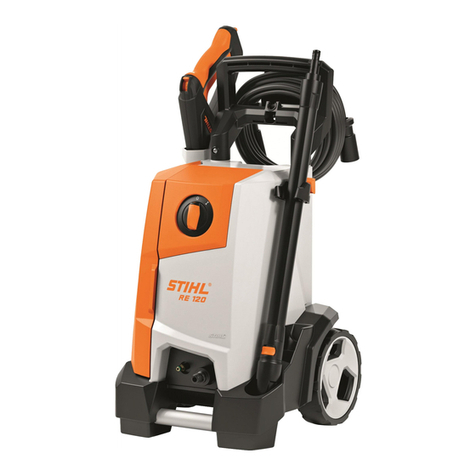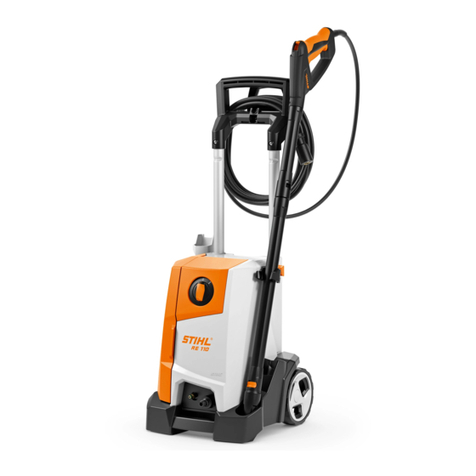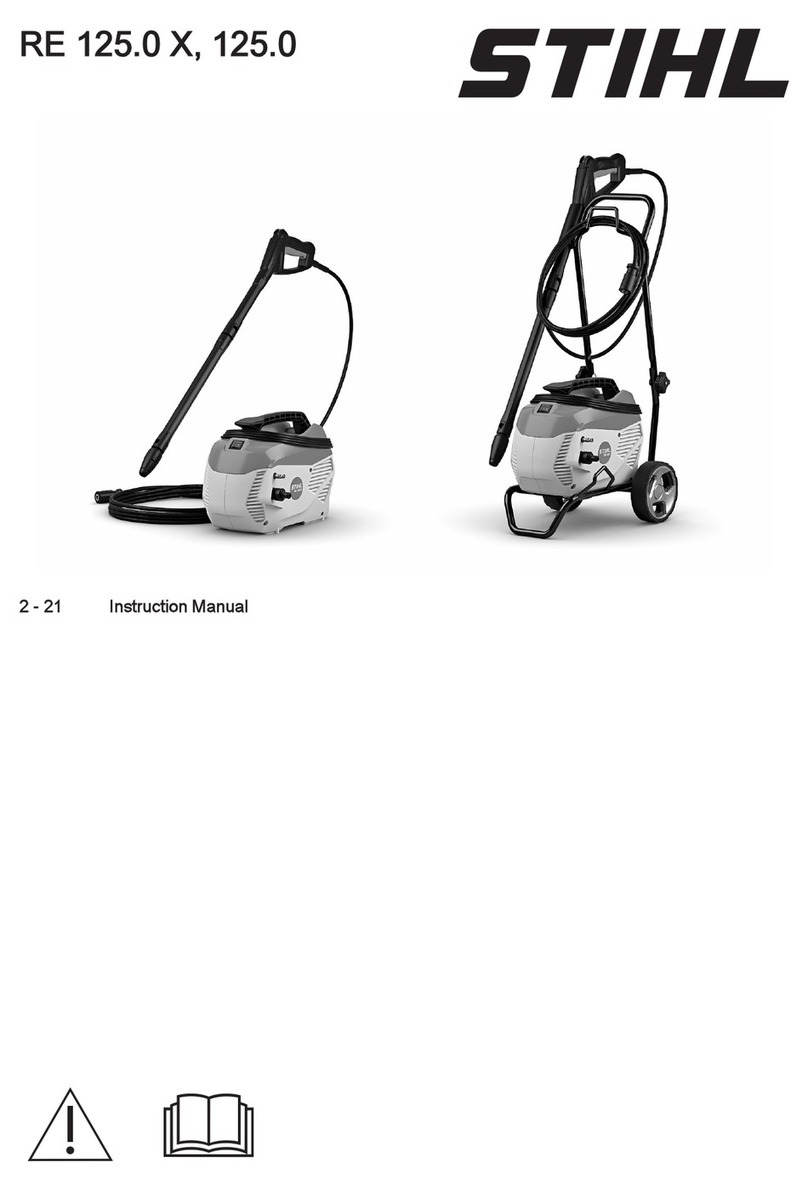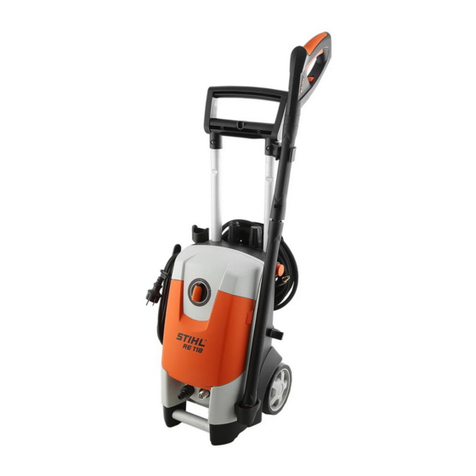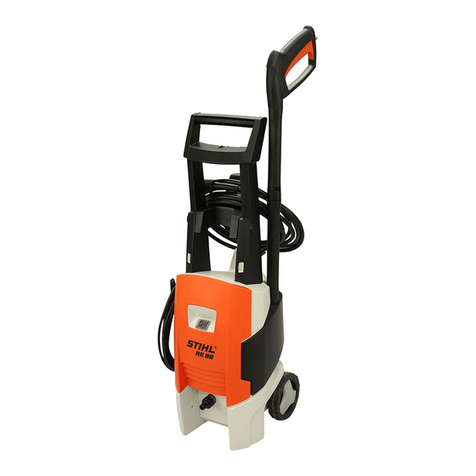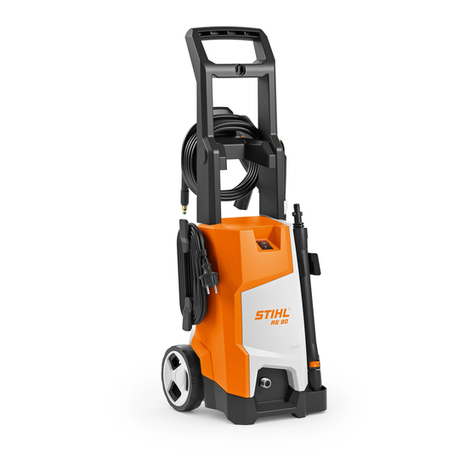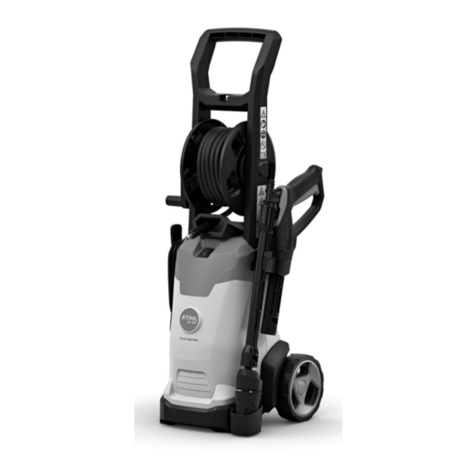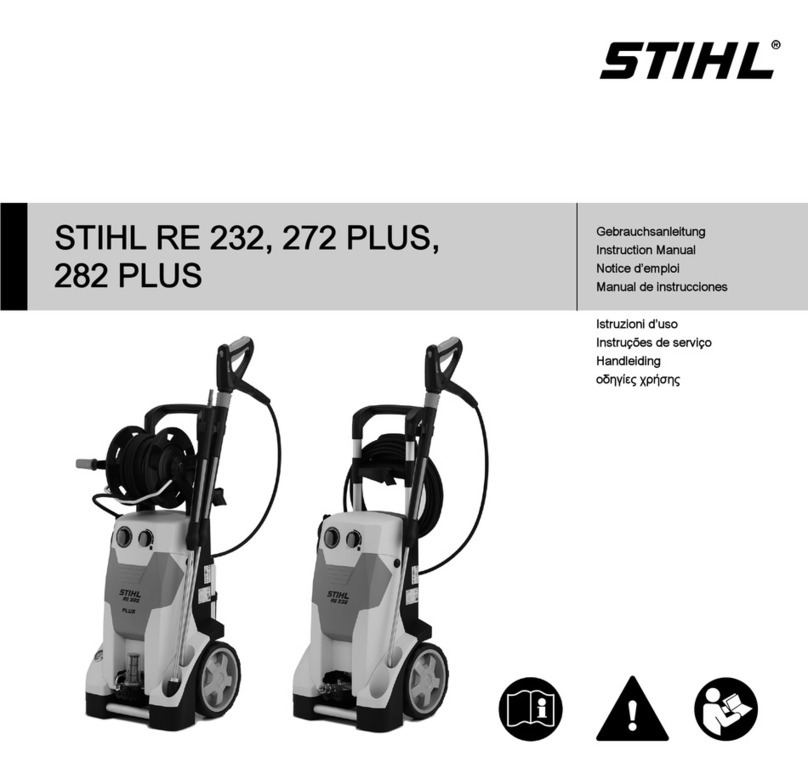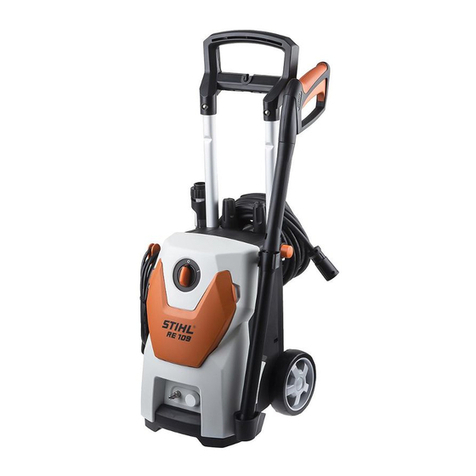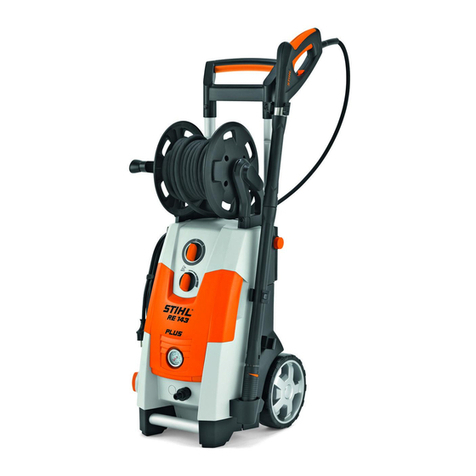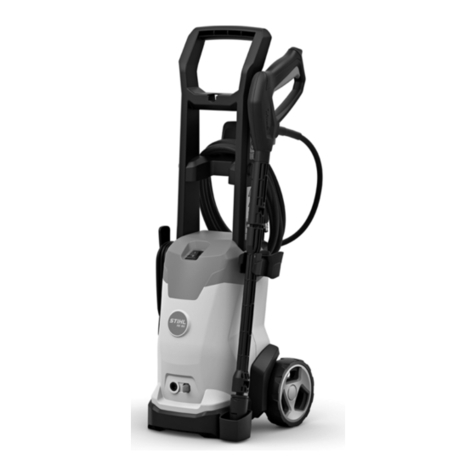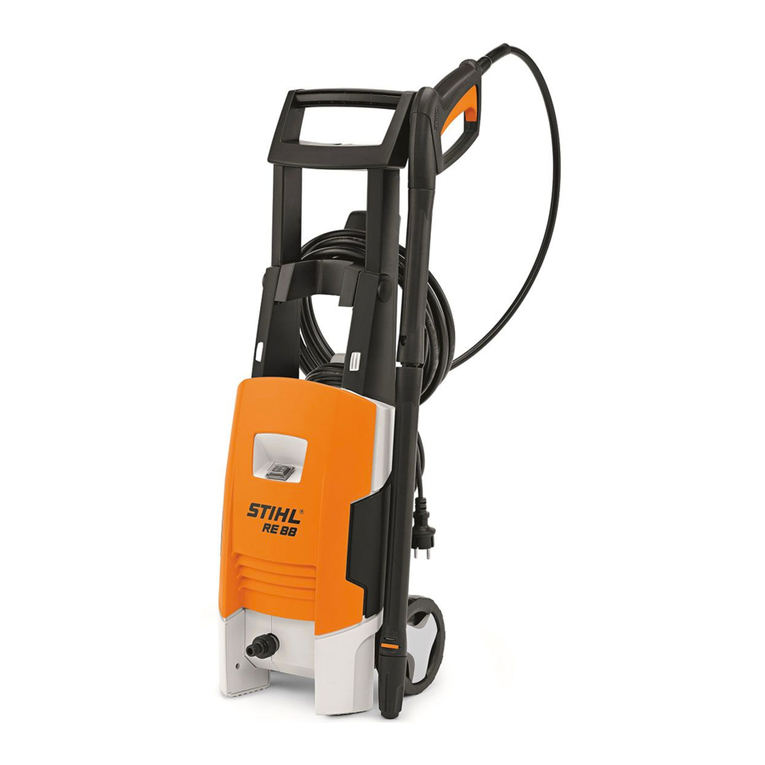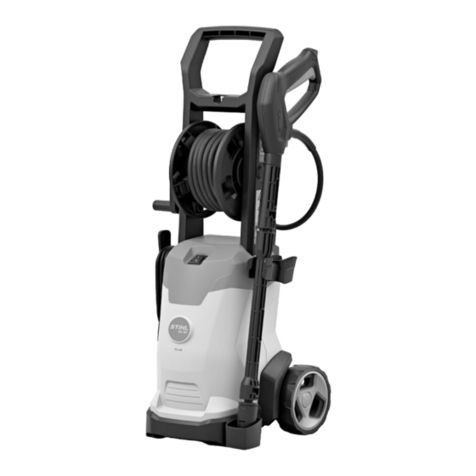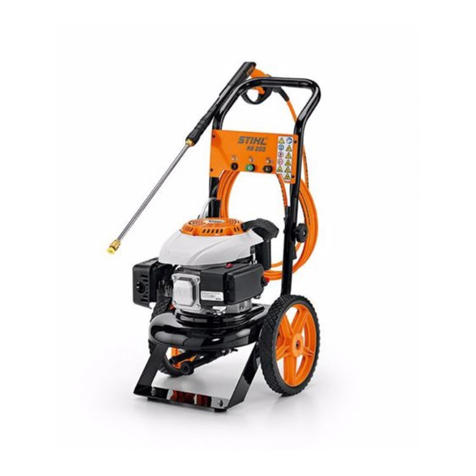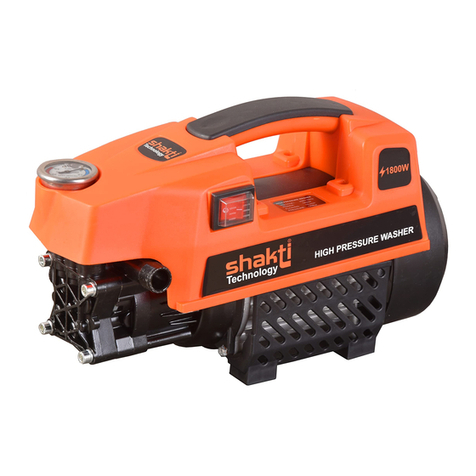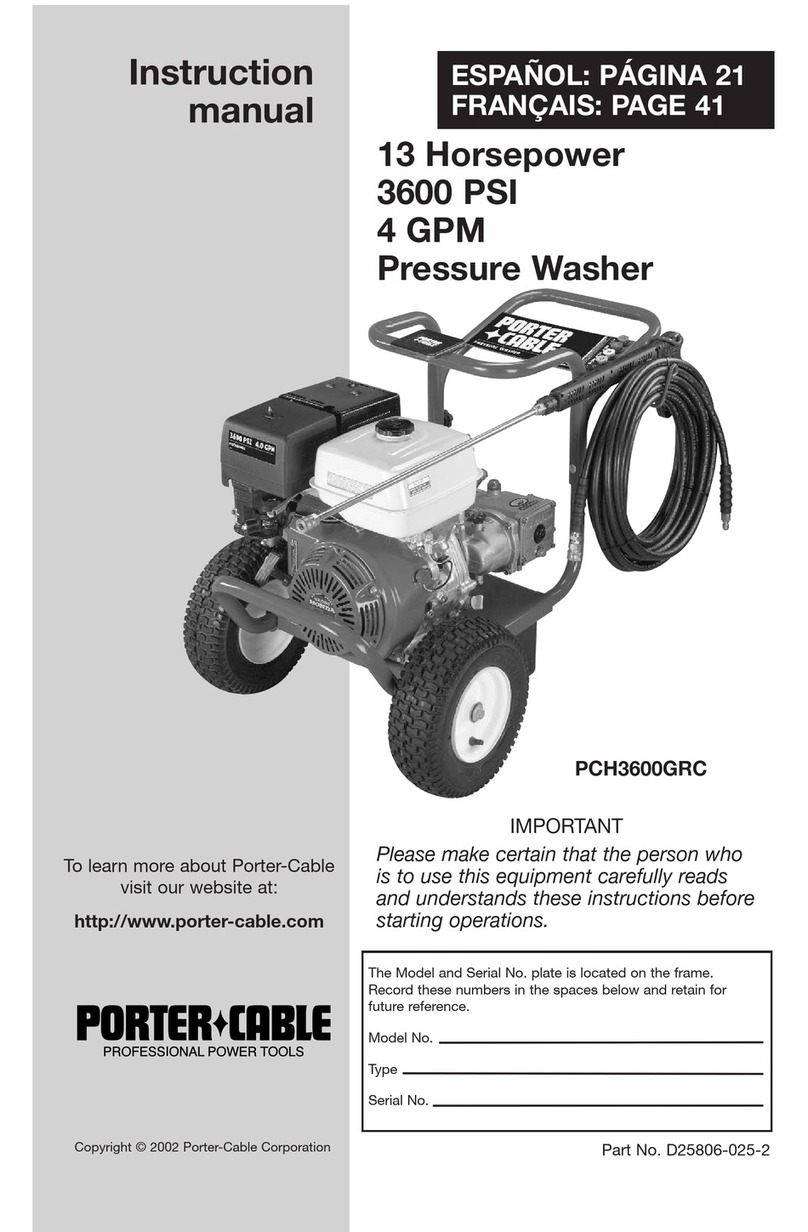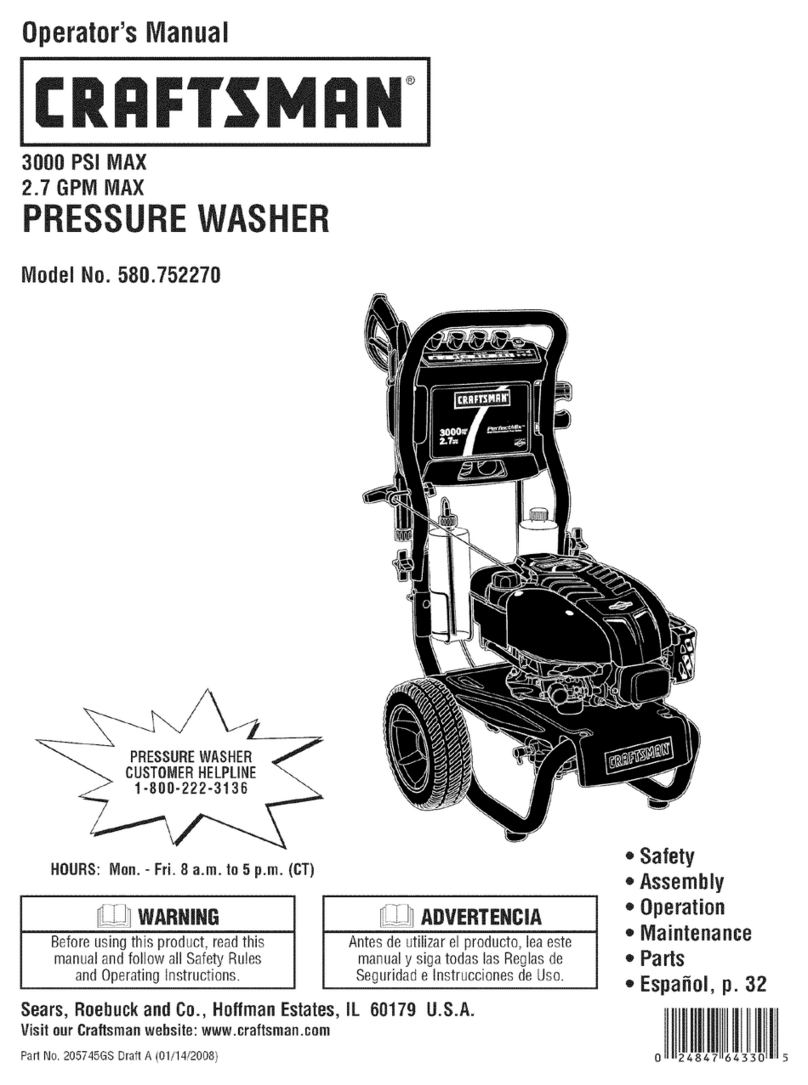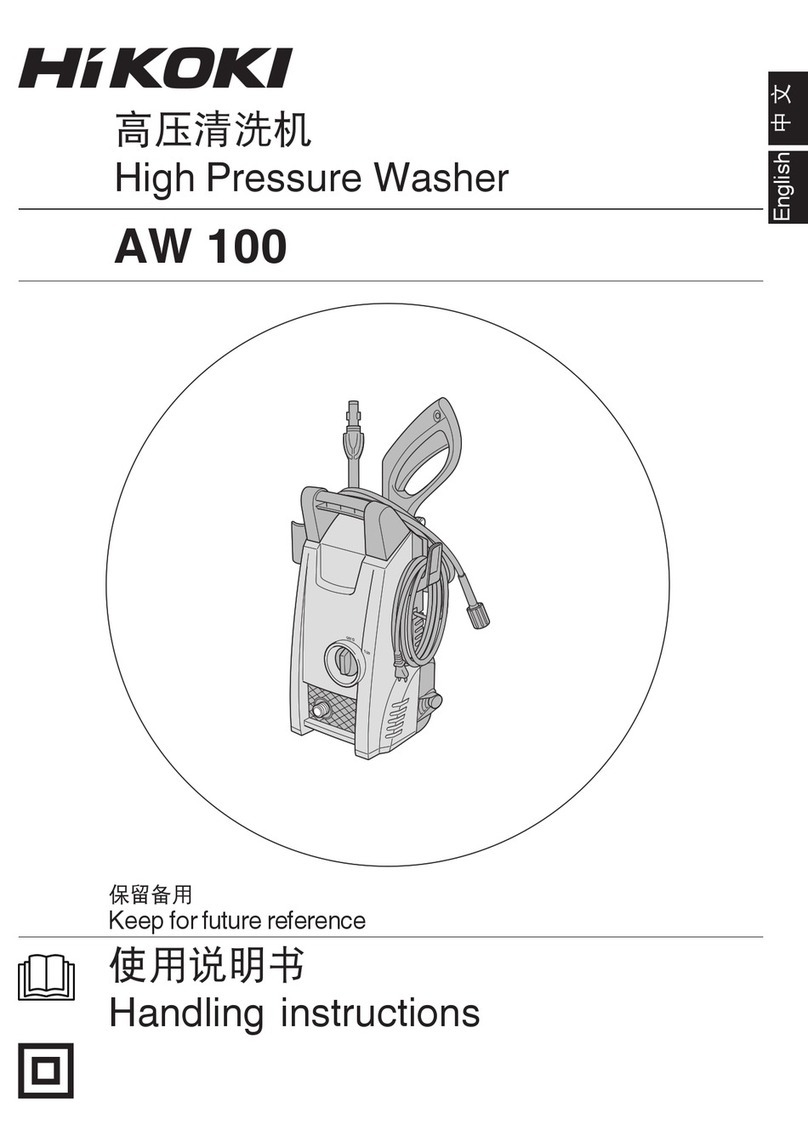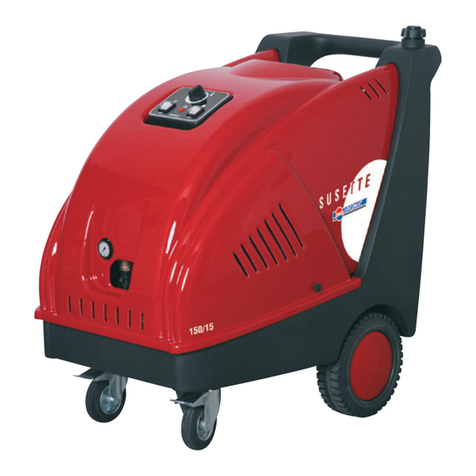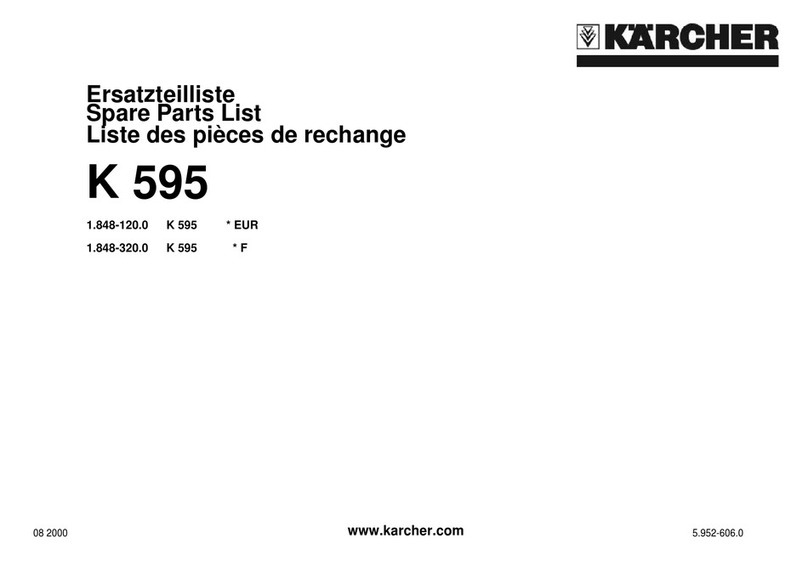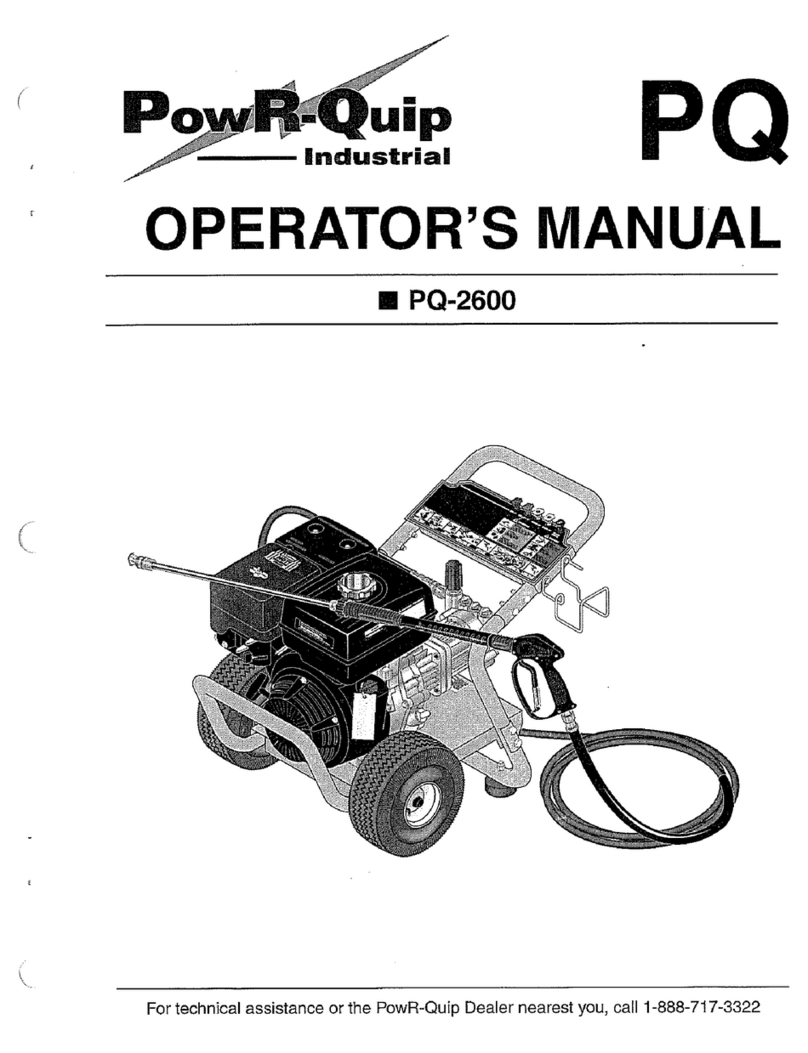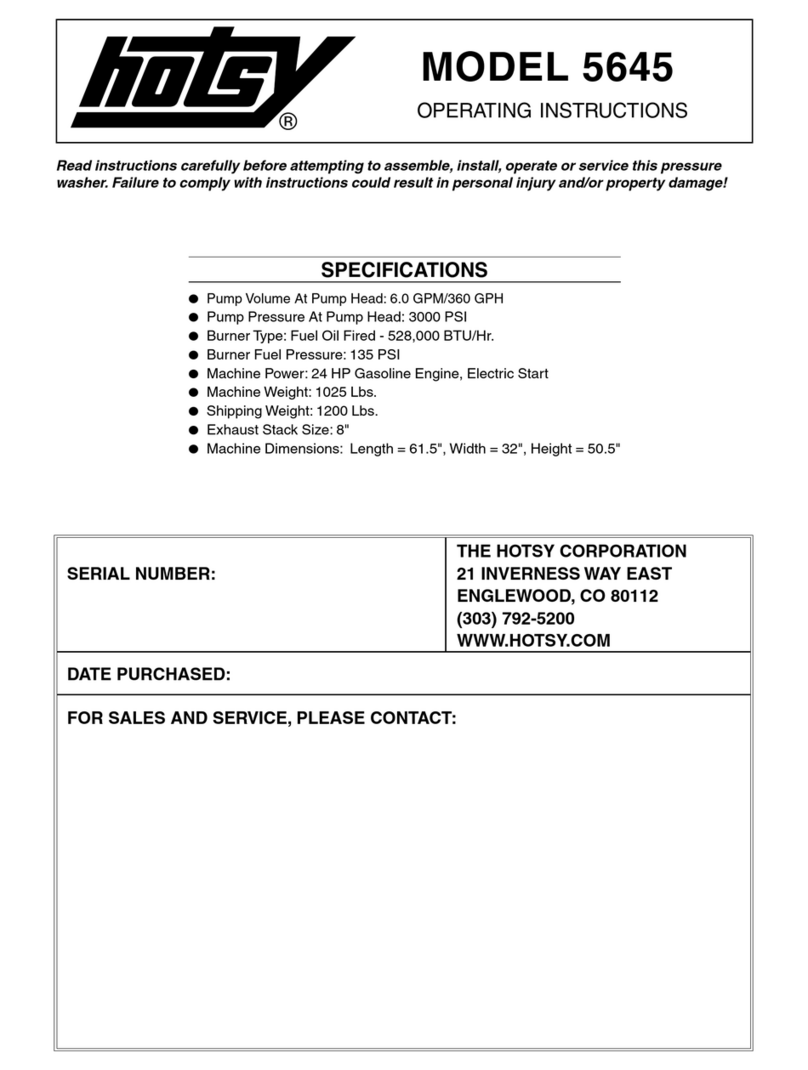
This Repair Manual contains a
detailed description of the
fundamental repair work on STIHL
high-pressure cleaners of series
STIHL RE 140 K, 160 K.
A test bed with the necessary
water and power supplies should
be provided for the repair work.
The unit must be connected to the
pressurized water supply and the
fault described by the customer
reproduced, with the customer
demonstrating the fault if
necessary. The customer’s
attention must be drawn to the
User Manual if the machine is
operated incorrectly.
Faults may be due to several
causes. The "Summary of
possible faults" should therefore
be consulted see 4.
The illustrated spare parts lists
must also be used for all repair
work. These lists show the
installation position and order in
which the individual assemblies
should be assembled. Microfilms
are more up-to-date than printed
spare parts lists.
Note the "Technical Information"
bulletins! They contain
information on technical changes
implemented after publication
of this Repair Manual. The
Technical Information bulletins
also supplement the spare parts
list until a new edition is printed!
Repair Manuals and Technical
Information bulletins should
always be kept on hand wherever
repairs are carried out.
They must not be passed on to
third parties.
Only original STIHL spare parts
maybeused!
Please refer to the preceding
Repair Manual for the RE 160 K if
the procedures described and
illustrated in this Repair Manual do
not correspond with your machine.
High-pressure cleaners may only
be repaired by qualified
electricians (in accordance with
DIN VDE 0701 and accident
prevention regulations VBG 4 in
Germany) with due regard for
national safety regulations and the
provisions of the User Manual.
1. FOREWORD 2. Safety regulations1.1 Note on RE 160 K
2RE 140 K, 160 K
